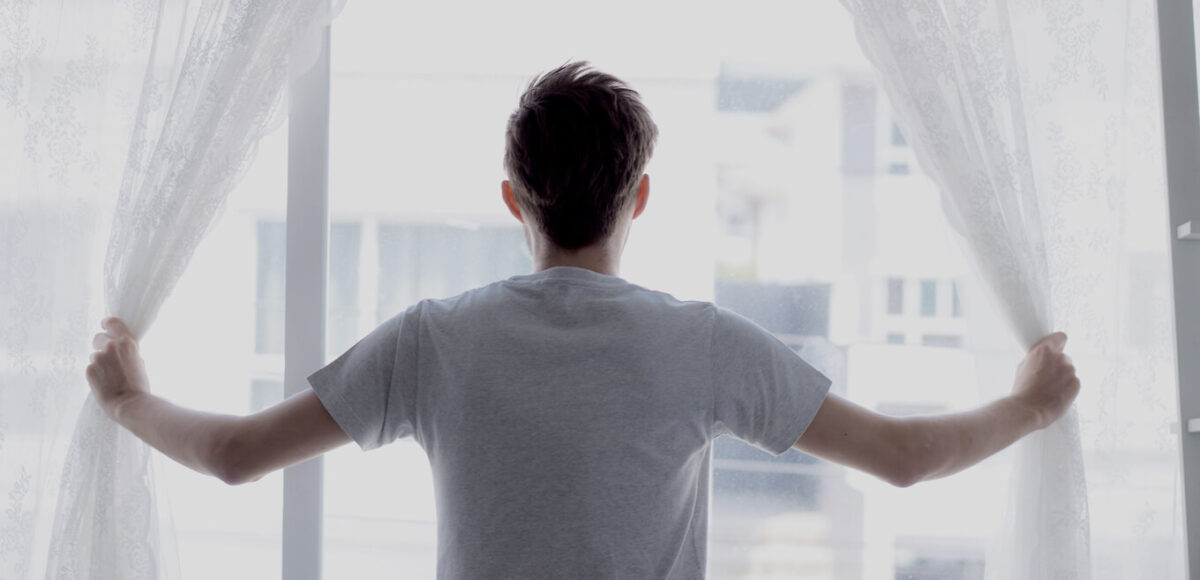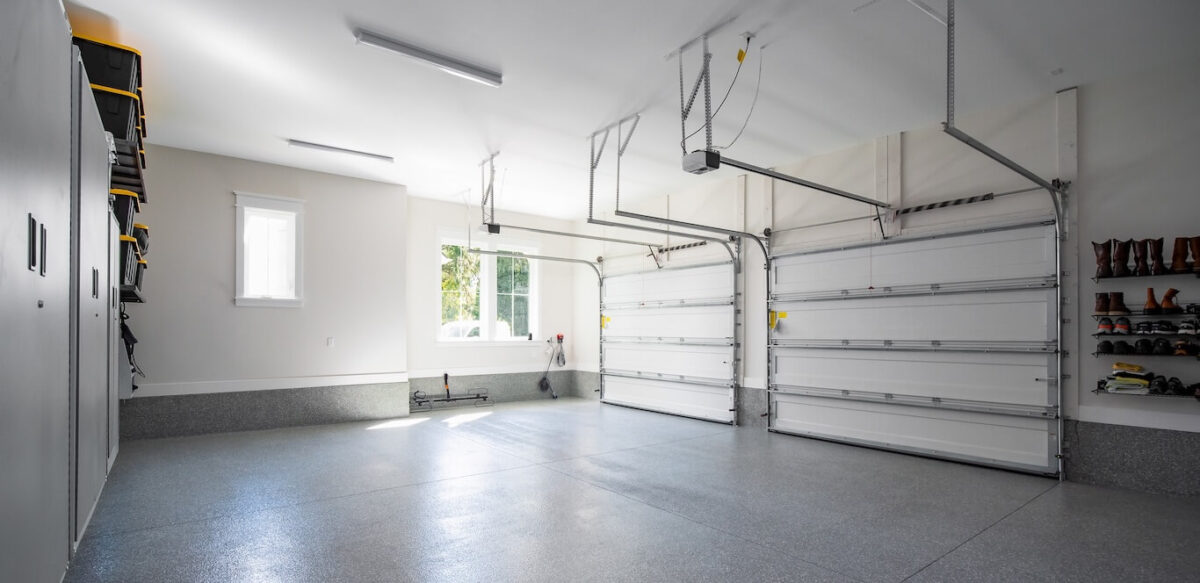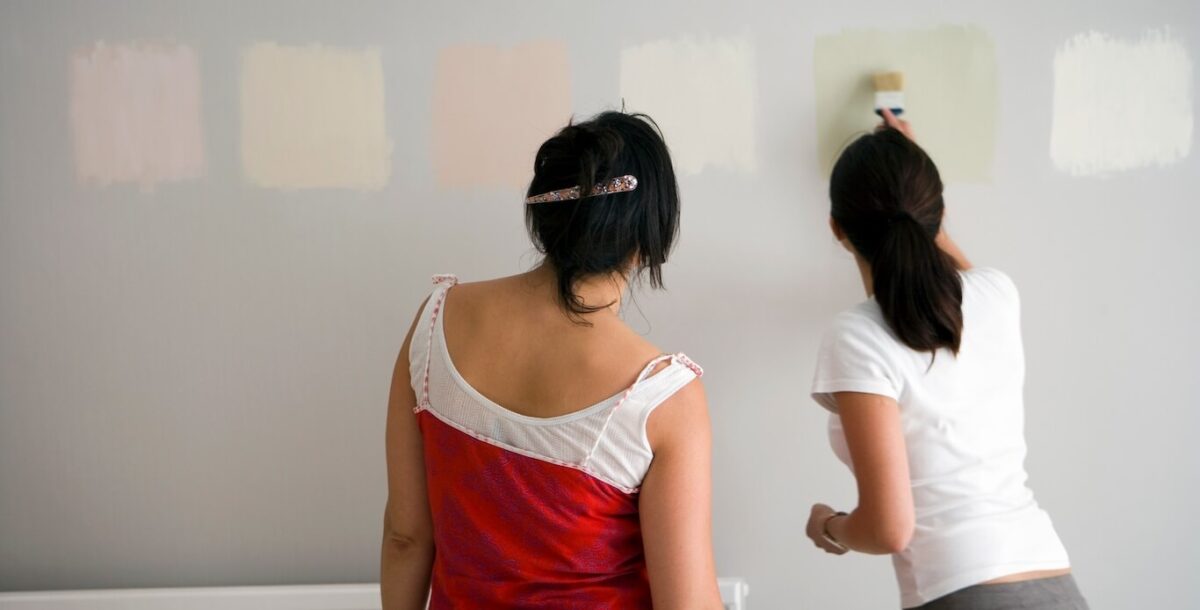There’s a lot of light flooding your home, but now you’ve also been flooded with curtain and blind options. What exactly is the difference between curtains and blinds? Why are there so many different material options? Is this a project I can do myself? The world of window coverings is surprisingly complex, so here’s what you need to know.
Curtains vs. Blinds – How Do You Choose?
The most apparent difference between curtains and blinds is that curtains are large panels of fabric that hang from rods, while blinds are adjustable slats typically mounted to the window frame. But the differences don’t end there. Consider these factors when deciding between curtains and blinds for your home.
Light
If you hope to eliminate all light from your room, you’ll likely want to choose curtains. Because blinds have slats, there will always be a bit of light getting through. With curtains – and especially blackout curtains – you can create total darkness.
If flexibility is your primary goal, consider blinds. Since you can adjust how open or closed the slats are, you have more control over the ambiance.
Privacy & Insulation
Both curtains and blinds offer a high level of privacy, insulation, and soundproofing. However, curtains better prevent heat loss during the colder seasons and offer increased sound absorption to reduce external noises. That means you might improve the peace of your home office with something as easy as curtains!
Aesthetic
With both curtains and blinds, you have plenty of design options. You can choose wooden blinds, roller blinds, Roman blinds, vertical blinds, metal blinds, illusion blinds, Venetian blinds – the list goes on! Similarly, curtains come in various fabrics, colors, and patterns.
You have the most design flexibility with curtains, but that doesn’t mean you can’t find the look you want with blinds. The internet has endless living room, bathroom, and bedroom curtain ideas, but the same goes for blinds!
Cost
There are a lot of factors that go into the overall cost for both curtains and blinds, including materials and installation.
On average, curtains are more expensive than blinds, especially when using high-quality fabrics. Curtains made of luxury fabrics are a pricey investment, while plastic blinds can be found for under $10.
However, simple cotton curtains will cost you less than wooden custom blinds. Your best bet is to determine the specific curtain and blind options you prefer before comparing.
Selecting a Material
As previously mentioned, there is a seemingly endless list of options to choose from when selecting your curtain or blind material.
Curtain Choices
If your priority is aesthetic, consider options like lace, silk, sateen, and velvet, which bring glamor and luxury to any space. These options offer varying levels of light blockage and privacy.
If you are hunting for budget-friendly options, you can’t beat cotton, polyester, rayon, micro-fiber, burlap, and synthetic fabrics. These fabrics pair well with simple and inexpensive curtain rods for privacy on a budget.
You may need something low maintenance and easy to clean for your bedroom window treatments, in which case synthetic, polyester, and bamboo are ideal. Similarly, cotton and linen are often safe in the washing machine (although you always want to check tags).
Blind Options
For budget-friendly shoppers, vinyl, metal, plastic, and aluminum blinds are typically the easiest on the wallet. These are often more “plain” blinds, but you can customize some.
Synthetic blinds are typically a bit more expensive, but they’re an excellent option if you want the look of costly blinds without the price tag. Synthetic blinds can look like wood or bamboo minus the wood or bamboo investment.
Individuals who prioritize the interior designer effect tend to prefer materials like wood and even leather. While these are costlier, they are unmatched in terms of style. Additionally, these materials are durable and can last for years.
How to Use Curtains and Blinds in Your Home
You know that curtains and blinds can enhance the look of your home, and they have utility such as adding privacy and adjusting the amount of light in the room. But they can also add to the atmosphere of your home!
Elevate your entryway.
Curtains aren’t just for the large windows in your home. Front door window coverings, whether they’re for whole glass doors or just the small window at the top of a door, can add privacy and a decorative touch to the entryway of your home. Pair a nice curtain with a beautiful credenza and a unique piece of wall art to give guests a great first impression as they step into your home.
Bolster your bedroom.
Curtains and blinds can add to the privacy of your bedroom, of course. But they can also help you get better sleep! Block the sunshine that pours onto your bed and right into your face every morning with blackout curtains. Or if you still want a little light aside from your lamps, tasteful blinds can be a nice medium. Match your window coverings with your accent pieces like your nightstand or blend with a statement chair to enhance your space.
Make a private nook feel cozy and secluded.
If you have limited space, especially if you share that space with a roommate or significant other, privacy can come at a premium. Utilize curtains to separate your room! Light and breezy sheer curtains separating off a comfortable sofa with snuggly throw pillows can turn your reading nook into a mystical escape. In a more utilitarian setting, hanging heavy curtains can help improve the privacy of your home office so your desk and office chair stay “at work” and out of sight while you relax with a good TV show after hours.
Boost your balcony.
Maybe your balcony overlooks a busy street, so you can’t enjoy your patio furniture as much as you’d like without feeling like you’re on a stage. Or maybe your sliding glass doors turn the sun into a spotlight, making it impossible to sit at your dining room table in the afternoon without sunglasses. Call in the curtains! Gauzy outdoor curtains can turn your balcony into an intimate space, no matter how much traffic there is below. Blinds for patio doors can make your dining room, living room, or any other space more comfortable.
Professional or DIY Installation?
Whether or not you can install your own curtains and blinds depends on your level of handiness. If you’re a regular DIYer with some toolbox competence, installing your curtains or blinds is a pretty doable task. It’s even more achievable when you’ve only got to do a couple of standard-size windows and you’ve got your own tools. Take careful measurements and have faith in your abilities!
The task is a bit trickier if you’re installing any sort of specialty or custom curtains or blinds (think blinds for sliding glass doors), if you’ve got oddly shaped windows, don’t own tools, or if you need window coverings for your entire home. In that case, hiring a professional is likely worth the installation cost.
Make Your Home Shine with CORT Outlet
Blinds and curtains are great for personalizing the look of your home and can provide privacy and control the amount of light in a room. The possibilities for window coverings are endless! Being able to personalize your house is a vital part of making it feel like home – and just as important is filling your home with high-quality furniture and decor that will last.
When you’re ready to change your home decor, find timeless pieces that match your style and work with your taste at CORT Furniture Outlet. Not only are CORT Furniture Outlet pieces inspected and certified clean by our expert team, but you can feel good knowing that you’re helping to keep used furniture out of the landfill. Shop gently used furniture and decor at up to 70% off at your local CORT Furniture Outlet or online today!






